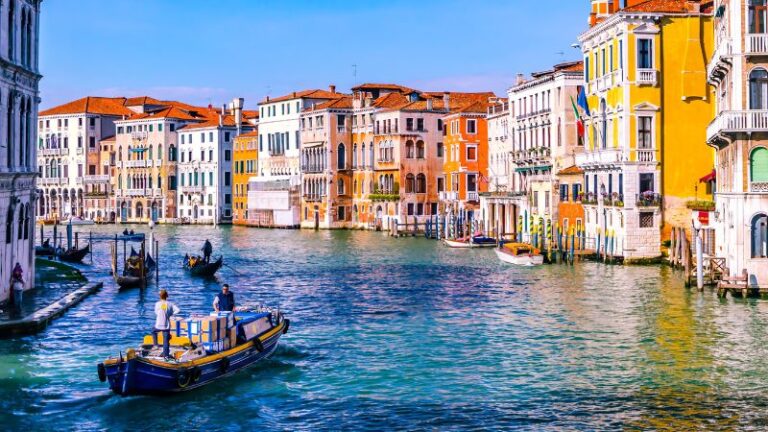Worst Time To Visit London: Don’t Go In These Months

As participants in Amazon Associates and other programs, we earn from qualifying purchases. This comes at no additional cost to you. For more details, see our Affiliate Disclosure.
London is a bustling metropolis that attracts millions of visitors yearly with its rich history, diverse culture, and iconic landmarks. However, with unpredictable weather patterns and busy tourist seasons, it’s important to consider the best time to visit the city. While many tourists may assume that any time of year is a good time to explore London, certain months may not be ideal.
In this article, we will explore the worst times to visit London and provide insights into why these months may not be the best for tourists. From crowded streets and high prices to dreary weather conditions, several factors should be considered when planning a trip to London. Whether you’re a first-time visitor or a seasoned traveler, understanding the best time to visit London can make all the difference in your overall experience of this vibrant city.
Why timing matters when visiting London
The timing of your visit to London can significantly impact your overall experience. London is a bustling metropolis that attracts millions of tourists yearly, making it a popular travel destination. However, the city’s high tourism demand can cause overcrowding and steep prices, particularly during summer. During this peak season, the streets can be congested with people, and popular attractions such as the Tower of London and the British Museum can have long lines. Additionally, hotel prices tend to be higher during the summer months, making it more difficult to find affordable accommodation.
Weather is another crucial factor to consider when planning your visit to London. The city’s climate is unpredictable, with rain and strong winds occurring throughout the year. While London is known for its rainy weather, it’s important to note that some months are wetter than others. The winter months can be particularly dreary, with short daylight hours and chilly temperatures, making exploring the city’s outdoor attractions less enjoyable. Therefore, by carefully considering the timing of your visit, you can avoid the worst of the weather and ensure a comfortable and enjoyable trip.
Summer months: Crowded streets and high prices
The summer months in London are undoubtedly the most popular time to visit the city. From June to August, the streets are bustling with tourists worldwide, and the city’s many iconic landmarks and attractions are at their busiest. However, this popularity also means that the streets can be overcrowded, and the prices for everything from hotels to restaurant meals can be high. Visitors may stand in long queues to see popular attractions like the British Museum or Buckingham Palace. This can be frustrating and tiring, especially during the hot and humid summer.
Furthermore, the high demand for accommodations during the summer can make finding affordable lodging challenging. Many hotels in central London raise their prices during the peak season, and room competition can be intense. Prices for flights and other activities may also be higher, making it more difficult to stick to a budget.
Visitors should be prepared for the heat and humidity, which can be oppressive in the city’s narrow streets and cramped public transportation systems. Therefore, while the summer offers many exciting opportunities to explore London’s cultural and historical offerings, visitors should plan to avoid the crowds and high prices.
Winter months: Cold, dark, and dreary weather conditions
The winter months in London, from December to February, are characterized by cold, dark, and dreary weather conditions. The days are short, with only a few hours of daylight, and temperatures can be chilly, with average highs in the 40s°F (4-7°C). The weather can be rainy and windy, with occasional snow flurries, making exploring the city’s outdoor attractions less enjoyable. The dreary weather conditions can also lead to a lack of energy and motivation among visitors, making it more challenging to fully appreciate the city’s offerings.
Despite the less-than-ideal weather conditions, the winter months in London can offer unique experiences, such as the festive holiday season and the city’s many indoor attractions. The city is adorned with festive lights and decorations, and visitors can enjoy ice skating, Christmas markets, and other holiday-themed activities. Additionally, the winter months are an excellent time to visit the city’s many museums, galleries, and theaters, which offer a respite from the chilly weather.
While winter may not be the ideal time to explore London’s outdoor offerings, visitors can still enjoy the city’s unique charm and cultural offerings, making it an attractive option for those willing to brave the cold and damp conditions.
Shoulder seasons: Unpredictable weather patterns and seasonal attractions
The shoulder seasons in London, from March to May and from September to November, offer a balance between the summer crowds and the cold weather of winter. However, these seasons have challenges, including unpredictable weather patterns and seasonal attractions. The weather during these seasons can be mild and pleasant, with average temperatures ranging from the 50s°F (10-15°C) to the 60s°F (15-20°C). However, rain is still possible, and visitors should be prepared for occasional showers.
Additionally, some of the city’s seasonal attractions may not be available during the shoulder seasons. For example, some outdoor events and festivals, such as the Wimbledon tennis tournament and the Notting Hill Carnival, take place during summer and may not be available during the shoulder seasons. However, visitors can still enjoy many of the city’s indoor attractions, such as museums, theaters, and galleries, which offer respite from unpredictable weather conditions.
Furthermore, the shoulder seasons offer a quieter and more relaxed atmosphere, with fewer crowds and lower prices for accommodations and activities. Therefore, visitors willing to be flexible with their plans and comfortable with the possibility of rain can enjoy a comfortable and rewarding experience during the shoulder seasons in London.
Special events: Avoiding peak tourist season
Special events in London can significantly impact the number of tourists visiting the city, and it’s important to be aware of these events when planning your trip. Many of these events, such as major sporting events and music festivals, can attract large crowds and cause prices for accommodations and activities to increase. Therefore, avoiding peak tourist season during these events can help visitors save money and enjoy a more relaxed experience. Some of the special events to consider when planning your visit to London include:
- Major sporting events, such as the Wimbledon tennis tournament and the London Marathon, can attract large crowds and cause prices to rise.
- Music festivals, such as the British Summer Time Festival and the Notting Hill Carnival, can be enjoyable to attend but can also cause overcrowding and increased prices.
- National holidays, such as Christmas and New Year’s Eve, can offer unique experiences but may also result in crowded streets and limited availability of accommodations and activities.
By considering the timing of these events, visitors can plan their trips accordingly and ensure an enjoyable and cost-effective experience in London.
Tips for planning your visit to London
Planning a visit to London can be overwhelming, but several tips can help you make the most of your trip:
- Research the best time to visit: As discussed earlier, the timing of your visit can significantly impact your experience in London. Consider the weather, crowds, and events when deciding when to visit.
- Book accommodations in advance: London is a popular tourist destination, and accommodations can fill quickly, especially during peak season. Book your hotel or rental beforehand to get the best price and location.
- Purchase tickets in advance: Popular attractions like the Tower of London and the British Museum can have long lines. To save time and avoid crowds, consider purchasing tickets in advance.
- Use public transportation: London has an extensive public transportation system that includes buses, trains, and the famous Tube. Public transportation can be a cost-effective and efficient way to navigate the city.
- Pack for the weather: London’s weather can be unpredictable, so be sure to pack clothing that can be layered and waterproof. Bringing comfortable shoes for walking and exploring is also a good idea.
- Try local cuisine: London is known for its diverse and delicious cuisine, so try local favorites such as fish and chips, meat pies, and curry.
- Explore beyond the tourist areas: While London’s major landmarks and attractions are must-sees, be sure to explore beyond the tourist areas to discover hidden gems and experience the city like a local.
By following these tips, visitors can make the most of their trip to London and have a memorable and enjoyable experience.
Choosing the best time to visit London
Choosing the best time to visit London depends on your preferences and priorities. Here are some factors to consider:
- Weather: If you prefer mild temperatures and sunshine, the shoulder seasons of March to May and September to November may be the best time to visit. However, if you’re willing to brave the cold and damp conditions, winter can offer unique experiences, such as festive holiday celebrations.
- Crowds: If you prefer a quieter and more relaxed atmosphere, consider visiting during the shoulder seasons or special events that may attract fewer tourists. Avoid peak tourist season during the summer, when the city can be overcrowded and expensive.
- Special events: If you’re interested in attending major sporting events or music festivals, plan your visit around these events and book accommodations and tickets in advance.
- Budget: If you’re traveling on a budget, consider visiting during the shoulder seasons when prices for accommodations and activities may be lower. Additionally, research affordable dining options and use public transportation to save on costs.
By carefully considering these factors, you can choose the best time to visit London that suits your preferences and priorities. Whether you’re interested in exploring the city’s history and culture or attending major events and festivals, London offers something for everyone year-round.






